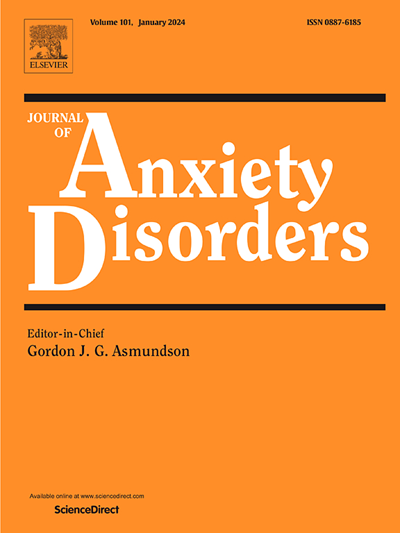Prevalence and correlates of alcohol, cannabis, and tobacco use disorder in DSM-5 generalized anxiety disorder: Findings from the National Epidemiologic Survey on Alcohol and Related Conditions-III
IF 4.5
2区 医学
Q1 PSYCHIATRY
引用次数: 0
Abstract
Substance use disorders have been linked to Generalized Anxiety Disorder (GAD), though much of this research predates DSM-5 diagnostic criteria. Further, little prior work has examined the demographic correlates of specific substance use disorders among individuals with GAD. These demographic correlates, as well as the presence of comorbid substance use disorder, may also impact treatment seeking in individuals with GAD. In the present study, we explored the relationship between GAD and common substance use disorders (Alcohol Use Disorder, Cannabis Use Disorder, and Tobacco Use Disorder), as well as the demographic factors associated with these disorders among individuals with GAD in a large, nationally representative sample. We also tested whether each of these substance use disorders were associated with GAD-related treatment seeking. Controlling for demographics and comorbidities, lifetime GAD was positively associated with lifetime Alcohol and Cannabis Use Disorder, but not Tobacco Use Disorder, whereas past-year GAD was positively associated with past year Cannabis and Tobacco Use Disorder but not past year Alcohol Use Disorder. Lastly, lifetime Alcohol Used Disorder but not Cannabis or Tobacco Use Disorder was associated with higher rates of GAD-related treatment seeking. Collectively, these findings reflect an updated examination of GAD and disordered substance use using DSM-5 diagnostic criteria and indicate the importance substance use comorbidities in the context of GAD.
DSM-5广泛性焦虑障碍中酒精、大麻和烟草使用障碍的患病率及其相关性:来自全国酒精及相关疾病流行病学调查的结果- iii
物质使用障碍与广泛性焦虑症(GAD)有关,尽管这方面的许多研究早于DSM-5的诊断标准。此外,很少有先前的工作研究了广泛性焦虑症患者中特定物质使用障碍的人口学相关性。这些人口统计学相关性,以及共病物质使用障碍的存在,也可能影响广泛性焦虑症患者的治疗寻求。在本研究中,我们探讨了广泛性焦虑症与常见物质使用障碍(酒精使用障碍、大麻使用障碍和烟草使用障碍)之间的关系,以及与广泛性焦虑症患者中这些疾病相关的人口统计学因素。我们还测试了这些物质使用障碍是否与gad相关的治疗寻求有关。控制人口统计学和合并症,终生广泛性焦虑症与终生酒精和大麻使用障碍呈正相关,但与烟草使用障碍无关,而过去一年广泛性焦虑症与过去一年大麻和烟草使用障碍呈正相关,但与过去一年酒精使用障碍无关。最后,终生酒精使用障碍(而非大麻或烟草使用障碍)与较高的gad相关治疗寻求率相关。总的来说,这些发现反映了使用DSM-5诊断标准对广泛性焦虑症和药物使用紊乱的最新检查,并表明了药物使用合并症在广泛性焦虑症背景下的重要性。
本文章由计算机程序翻译,如有差异,请以英文原文为准。
求助全文
约1分钟内获得全文
求助全文
来源期刊

Journal of Anxiety Disorders
Multiple-
CiteScore
16.60
自引率
2.90%
发文量
95
期刊介绍:
The Journal of Anxiety Disorders is an interdisciplinary journal that publishes research papers on all aspects of anxiety disorders for individuals of all age groups, including children, adolescents, adults, and the elderly. Manuscripts that focus on disorders previously classified as anxiety disorders such as obsessive-compulsive disorder and posttraumatic stress disorder, as well as the new category of illness anxiety disorder, are also within the scope of the journal. The research areas of focus include traditional, behavioral, cognitive, and biological assessment; diagnosis and classification; psychosocial and psychopharmacological treatment; genetics; epidemiology; and prevention. The journal welcomes theoretical and review articles that significantly contribute to current knowledge in the field. It is abstracted and indexed in various databases such as Elsevier, BIOBASE, PubMed/Medline, PsycINFO, BIOSIS Citation Index, BRS Data, Current Contents - Social & Behavioral Sciences, Pascal Francis, Scopus, and Google Scholar.
 求助内容:
求助内容: 应助结果提醒方式:
应助结果提醒方式:


